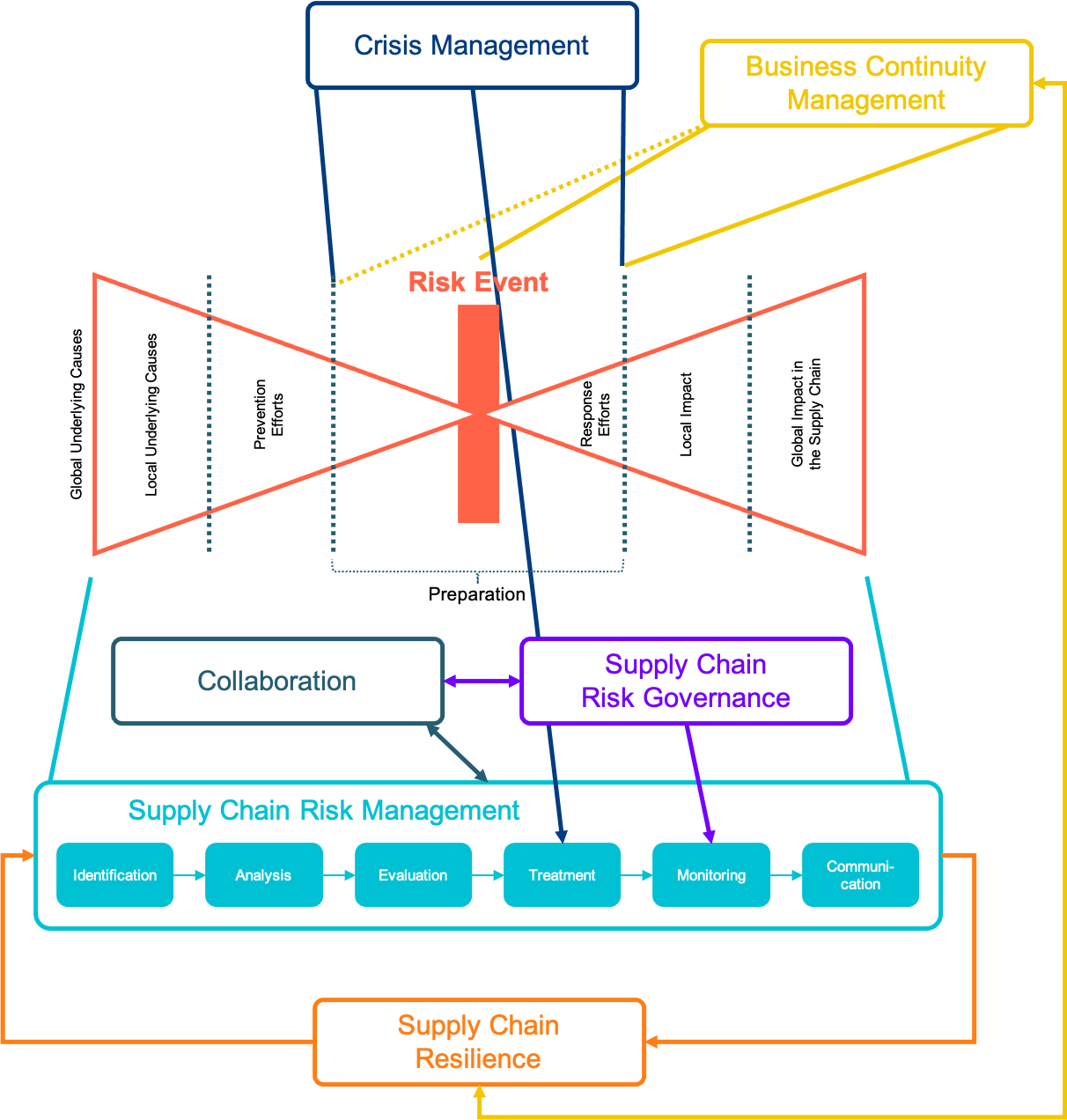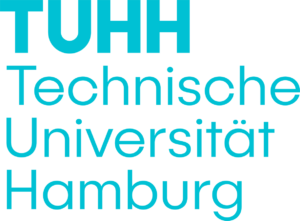An integrated process for collaborative Supply Chain Risk Management in Crisis Situations
At the core of every Risk Management Process lies the possible occurrence of a Risk Event. The Butterfly Model explains the events preceding and subsequent events and efforts of a Risk Event. In order ot reduce the chance of a Risk Event ocurrence and to mitigate the effects once a Risk Event has ocurred, an organisation should consider several essential processes and aspects. These six processes are:
- Supply Chain Risk Management
- Supply Chain Risk Governance
- Supply Chain Resilience
- Business Continuity Management
- Crisis Management
- Collaboration
All of these processes are inter-connected and have specific functions and reach within the introduced Butterfly understanding of risk.
For detailed descriptions of each individual process as well as for a graphical depiction or a detailed explanation of their inter-connectednes please refer to the section below.
How are the different Processes inter-connected?

The core process is Supply Chain Risk Management (SCRM) with its own six phases ranging from Identification to Communication. SCRM thereby describes the process of minimizing the occurrence of a Risk Event and the effects of a Risk Event in the Supply Chain Context 3. Connected with the SCRM is Supply Chain Resilience (SCR), as it requires a functioning SCRM that makes the SC more resilient to various disruptions. SCR is connected to Identification Phase of the SCRM since the last steps of SCR include the consolidation of a list of identified SC risks, whereas this list can only be composed for the entire supply chain if all SC partners ensure proper transparency, efficient communication, and are aware of possible risks that could occur along the value chain.
Additional input-processes for SCRM are Supply Chain Risk Governance (SCRG) and Collaboration. SCRG is a major requirement for functioning SCRM since governance provides a mechanism to periodically review supply chain risks and the corresponding mitigation measures (i.e. monitoring phase of the SCRM). The SCRG as well as the overall SCRM process additionally require a good Collaboration with participants representing every node of the value chain, so that knowledge transfer as well as data and information sharing can be used for the efficient assessment and treatment of risks. A structured SCRG can be a driving force for a strong Collaboration in a SC.
In contrast to SCRM, Crisis Management (CM) and Business Continuity Management (BCM) are located in the more immediate vicinity of a Risk Event. CM is called into action as soon as the immediate occurrence of a Risk Event with high severity becomes evident, whereas the execution of BCM is entirely reactive only after a Risk Event has occurred. CM therefore also has a connection to the Treatment Phase of SCRM, as it can be influential to the overall mitigation of a Risk Event. Additionally BCM, and SCR influence each other, by pre-emptively developing BCM plans.
For a detailed description and how to execute each of these six processes please refer to any of them below.
Process

Supply Chain Risk Management
Our knowledge platform is based on a standard risk management process according to ISO 31000:2018
![]()
Supply Chain Risk Governance
Managing the Relationship between SC Stakeholders to reduce SC risks and short-term opportunism
![]()
Supply Chain Resilience
The Ability to return the SC to the same or even a more desireable state after a disturbance

Business Continuity Management
Business continuty management (BCM) is integrated to prepare organizations for crises and maintain business functions
![]()
Crisis Management
Deals with plans and precautions that need to be developed in order to overcome a crisis with a minimal damage

Collaboration
Within the context of supply chain management, collaboration reflexts trustworthy cooperation between actors upstram and downstream


